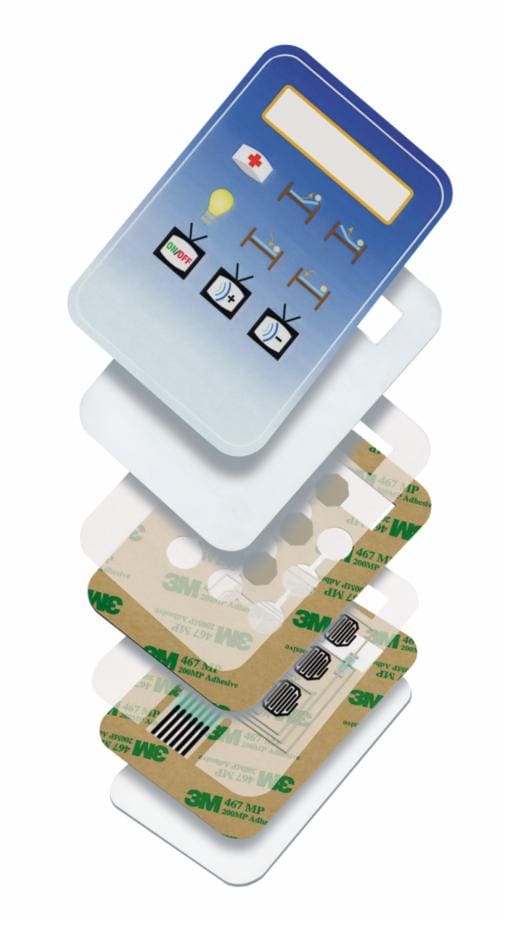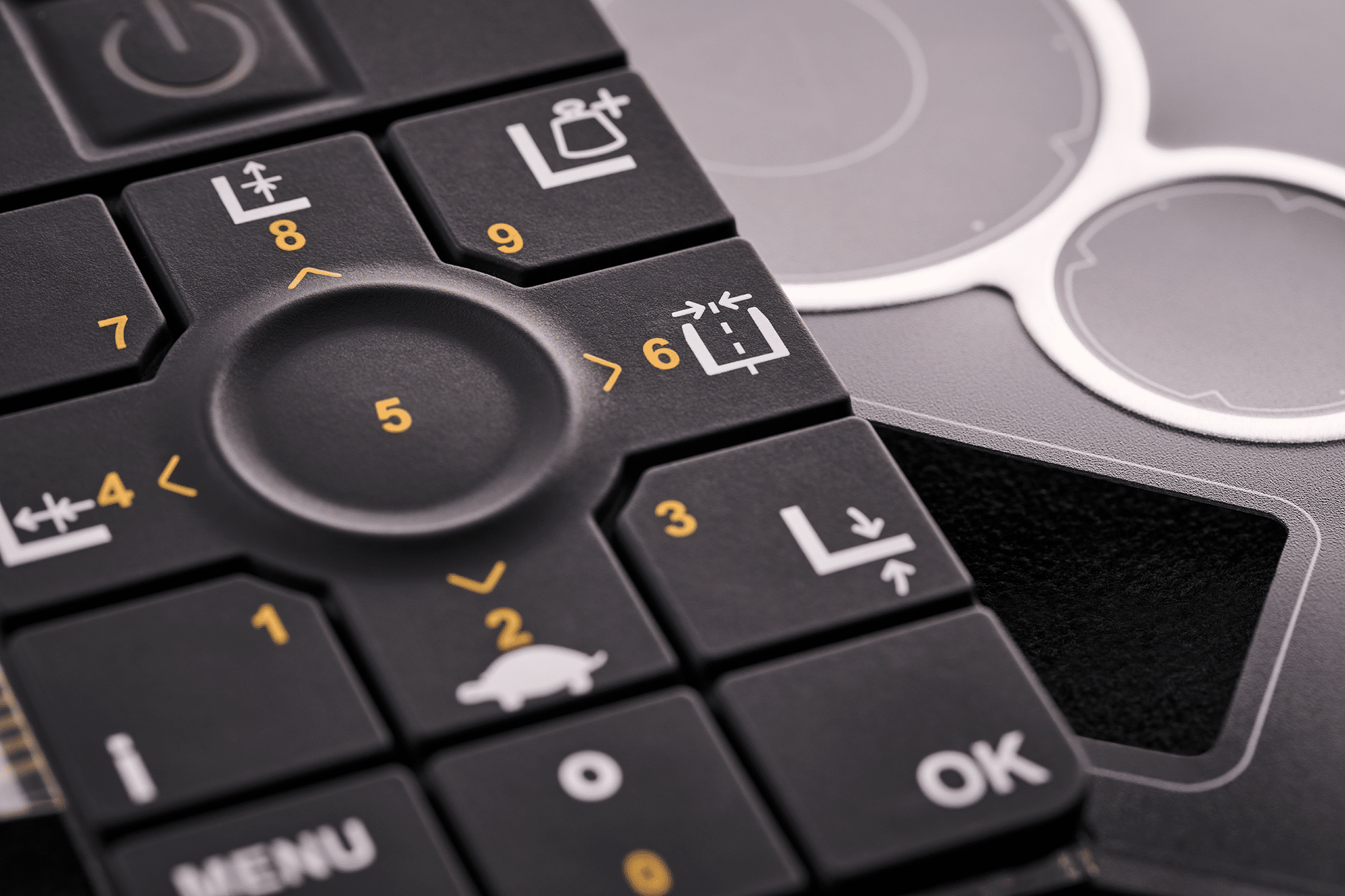Recognizing the Value of Membrane Layer Change in Modern Electronics
Membrane layer buttons are essential elements in modern digital gadgets. They offer a blend of capability and layout that improves customer interaction. Their resilient and light-weight nature makes them suitable for different applications. As sectors develop, the need for customization and advanced functions expands. Understanding exactly how membrane layer switches over add to development exposes their significance fit the future of electronics. What exists in advance for this modern technology?
The Fundamentals of Membrane Layer Switch Over Modern Technology
Typically forgotten, membrane button modern technology plays an important role in the contemporary electronics landscape. These devices, composed of multiple layers, work as interface for numerous electronic products, ranging from home appliances to medical devices. A regular membrane layer button contains a graphic overlay, a spacer layer, and a circuit layer, which are meticulously put together to create a functional interface.When stress is related to the overlay, the circuit layer is finished, enabling signals to be transmitted to the tool. This modern technology is recognized for its convenience, allowing customization in form, performance, and design to fulfill particular customer demands. In addition, membrane layer switches are light-weight and thin, making them ideal for applications where room is a costs. Their resilience and resistance to environmental aspects additionally enhance their allure, ensuring they can withstand rough conditions while keeping functionality. Generally, membrane button technology is important to creating efficient and straightforward electronic gadgets

Secret Advantages of Membrane Switches
Membrane layer switches deal several vital advantages that make them a favored option in different electronic applications. Their layout permits a compact form factor, making it possible for makers to develop smooth and light-weight gadgets. In addition, membrane layer buttons are immune to dirt, dampness, and chemicals, which boosts their resilience and durability sought after atmospheres. The responsive comments offered by these switches can improve individual experience, making them intuitive and easy to operate.Furthermore, membrane layer buttons can be personalized with diverse graphics and colors, allowing for one-of-a-kind branding possibilities. The production procedure is typically affordable, especially for high-volume manufacturing, as it lowers assembly time and streamlines layout. Membrane layer switches need minimal upkeep, adding to lower total operational prices. These advantages underscore their expanding popularity in modern-day electronics, where integrity and easy to use interfaces are crucial.

Applications Throughout Numerous Industries
The flexibility of membrane switches allows their widespread fostering across numerous markets. In the medical area, they are typically used in analysis equipment and person tracking systems, offering a sturdy interface immune to contaminants. The auto market makes use of membrane buttons for dashboard controls, improving user experience with smooth layouts that stand up to harsh problems. In customer electronics, they serve as control panels for tools such as microwaves and coffee machine, supplying an easy to use user interface that is very easy to clean. The aerospace industry utilizes membrane layer switches in cockpit controls, where integrity and area performance are vital. Additionally, the industrial field leverages these switches in machinery and control systems to assure robust operation popular settings. This broad variety of applications emphasizes the adaptability of membrane buttons, making them integral components in improving capability and user interaction across varied technical landscapes.
Customization and Style Versatility

Future Trends in Membrane Switch Growth
Arising fads in membrane layer switch growth show an expanding focus on improved performance and combination with smart technologies. As consumer need for a lot more innovative electronic gadgets increases, manufacturers are concentrating on developing membrane switches that not just offer fundamental operational roles but additionally include functions like touch sensitivity, backlighting, and haptic feedback.Furthermore, developments in products are anticipated to enhance sturdiness and environmental resistance, making membrane switches over appropriate for diverse applications in sectors such as health care, automobile, and customer electronic devices. The integration of capacitive touch modern technology is most likely to become much more prevalent, allowing for sleeker layouts and enhanced customer interfaces. membrane switch.Additionally, the increase of the Net of Things (IoT) is prompting the advancement of membrane changes that can communicate wirelessly my review here with various other devices, boosting interconnectivity. In general, the future of membrane layer switch modern technology appears encouraging, driven by advancement and the pursuit of straightforward services
Regularly Asked Questions
Exactly How Do Membrane Changes Contrast to Conventional Mechanical Buttons?
Membrane buttons, being extra space-efficient and providing a streamlined design, comparison with traditional mechanical switches that offer responsive comments. The previous often include adjustable graphics, while the latter usually guarantee toughness and reliability in different applications.
What Products Are Commonly Used in Membrane Layer Switch Over Production?
Membrane switches are normally generated using materials such as polyester, polycarbonate, and printed conductive inks. These materials supply durability, versatility, and responsiveness, making them appropriate for numerous applications in digital gadgets and customer interfaces.
Can Membrane Layer Switches Over Be Fixed or Recycled?
Membrane layer buttons can usually be fixed, especially if minor issues arise, such as glue failing or surface area damages. Complete reuse is typically limited due to put on and prospective degradation of materials over time.
Just How Do Ecological Factors Influence Membrane Switch Over Efficiency?
Ecological aspects, such as moisture, direct exposure, and temperature level Learn More to chemicals, significantly affect membrane layer button efficiency. Extreme problems can bring about deterioration, impacting responsiveness and long life, ultimately compromising the functionality of the device in numerous applications.
What Is the Common Life-span of a Membrane Change?
The typical life expectancy of a membrane layer button typically varies from 1 to 5 million actuations, depending on aspects such as use frequency, environmental problems, and the products used in manufacturing, influencing sturdiness and efficiency longevity. A common membrane button is composed of a visuals overlay, a spacer layer, and a circuit layer, which are carefully put together to create a practical interface - membrane switch.When stress is used to the overlay, the circuit layer is completed, enabling signals to be sent to the device. go The tactile feedback supplied by these buttons can enhance individual experience, making them very easy and intuitive to operate.Furthermore, membrane switches can be customized with diverse graphics and colors, allowing for unique branding opportunities. As consumer need for much more advanced electronic devices rises, producers are concentrating on creating membrane switches over that not just serve fundamental functional duties yet additionally integrate attributes like touch sensitivity, backlighting, and haptic feedback.Furthermore, advancements in materials are expected to enhance longevity and environmental resistance, making membrane layer switches ideal for diverse applications in sectors such as medical care, auto, and consumer electronics. The assimilation of capacitive touch modern technology is likely to end up being extra widespread, enabling for sleeker styles and enhanced customer interfaces.Additionally, the increase of the Net of Things (IoT) is prompting the advancement of membrane layer switches that can communicate wirelessly with various other tools, enhancing interconnectivity. Membrane layer buttons, being a lot more space-efficient and supplying a streamlined style, contrast with standard mechanical switches that give responsive responses